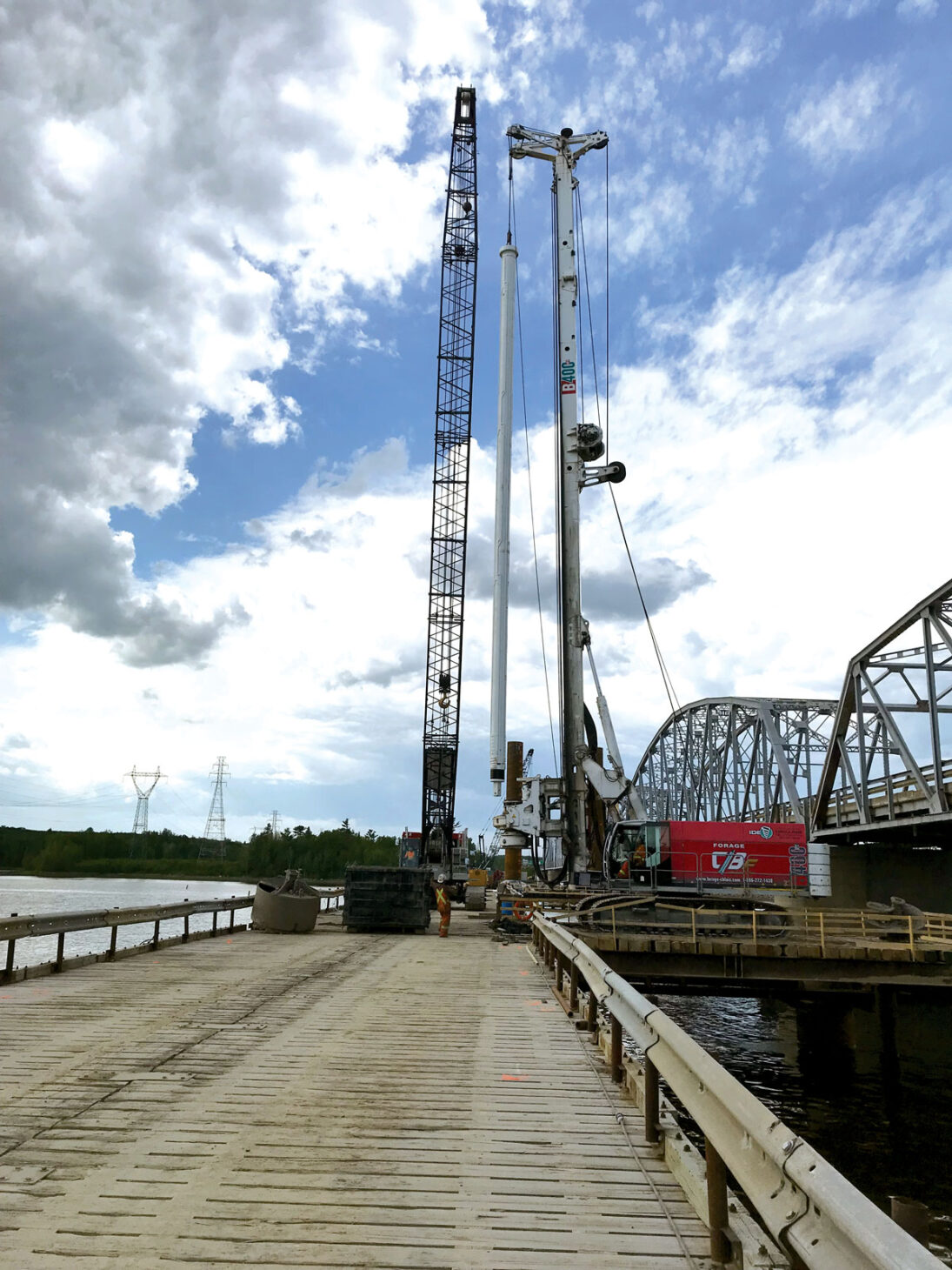
In August 2020, Caldwell & Ross Limited (C&R) was awarded the contract tendered by NBDTI to complete the substructure and steel girder erection on the Northwest Miramichi River Bridge No. 1 (Anderson Bridge). The new six-span bridge is 480 metres long and consists of five piers each supported by reinforced concrete filled caissons. This project posed many challenges due to the design of the pier foundations, environmental restrictions and the aggressive project completion date set for Nov. 30, 2022.
The original bridge design called for Piers 1, 4 and 5 to be supported by two seven-foot-diameter rock socketed caissons with depths ranging from 110 to 160 feet. Piers 2 and 3, located in the deepest area of the river channel (35 to 40 feet deep and 175 feet to the bedrock), were each to be supported by four drilled concrete piles in till and overlayed by a tremie plug and structural footing within a sheet pile cofferdam. The design of Piers 2 and 3 presented many risks and unknowns with respect to constructibility and the potential to delay the project schedule beyond the specified completion date. C&R bid for the project according to the original design and upon award of the contract began consulting with drilling contractor, Forage Camille Blais & Fils (CBF) to explore the potential of redesigning Piers 2 and 3 like Piers 1, 4 and 5 with the columns supported by two 1,980 millimetre-diameter rock socketed caissons.
Due to the significant depths, C&R encountered several issues while pouring the reinforced concrete in the shafts at Piers 2 and 3.
After careful review, CBF determined it was theoretically feasible to drill the caisson shafts to depths exceeding 200 feet. This prompted C&R to submit a Value Engineering Proposal (VEP) for the redesign of Piers 2 and 3 to NBDTI. C&R estimated this proposal would save $1.2 million and help reduce the risk of delays to the project schedule. NBDTI accepted the VEP in January 2021, after which the bridge designer HILCON Limited determined that the rock socketed caissons must be drilled to depths ranging from 210 to 230 feet. C&R and CBF spent the winter and spring of 2021 planning and acquiring the equipment and resources required to drill to these depths.
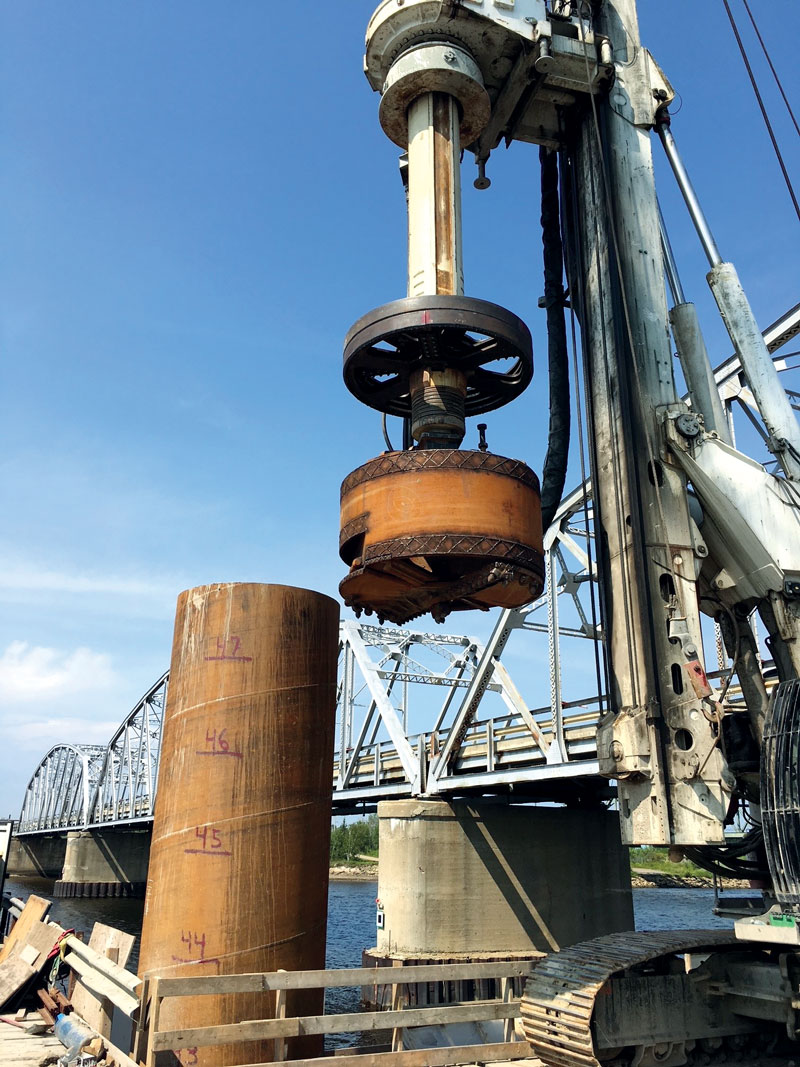
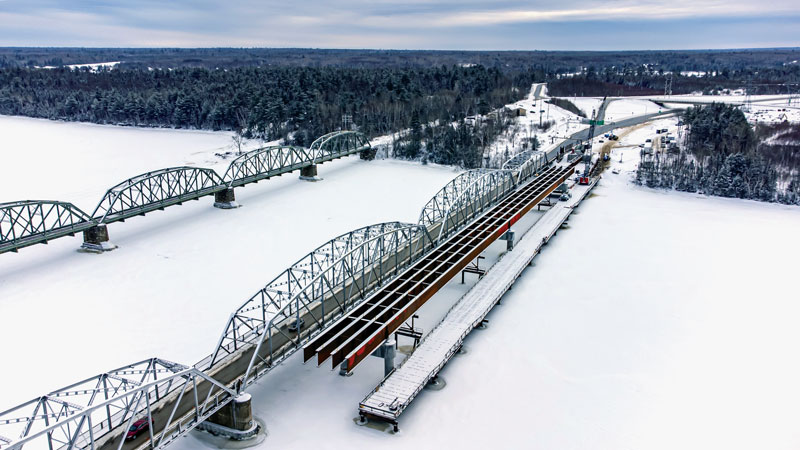
C&R worked closely with CBF while planning this work. The two companies had established a strong working relationship through several past projects, which includes drilling 10 rock socketed caissons for a six-span bridge in 2020. C&R and CBF employed much of the experienced staff and resources necessary to achieve caisson depths exceeding 200 feet, and acquired several pieces of equipment for added safety and to increase the efficiency of drilling operations. Included in the VEP was the purchase of a custom fabricated specialized Kelly bar required to drill the rock sockets to depths exceeding 200 feet.
To operate the specialty Kelly bar, CBF mobilized their Casagrande B400 XP-2 accompanied by several specialized buckets. In addition, CBF acquired an APE Model 300 vibratory driver with a Model 950 hydraulic power unit to advance the nearly 200 feet of steel casing through the dense till layer and seat the caisson into the bedrock. In preparation for this work, C&R had to reinforce their access trestle to support the added loads resulting from the B400 XP-2 with the specialty Kelly bar.
The design of Piers 2 and 3 presented many risks and unknowns with respect to constructibility and the potential to delay the project schedule beyond the specified completion date.
Due to the significant depths, C&R encountered several issues while pouring the reinforced concrete in the shafts at Piers 2 and 3. The more than 200 feet of tremie pipe required to pour each shaft often plugged due to concrete mix issues and resulted in several pump truck breakdowns causing delays in several pours. C&R worked with experienced pump truck operators and concrete mix design specialists to solve these issues and reduce delays in the project schedule.
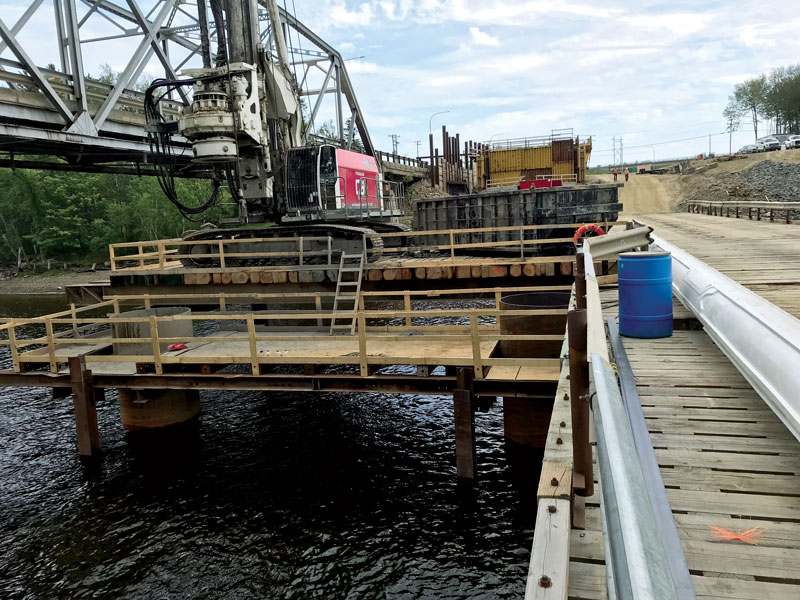
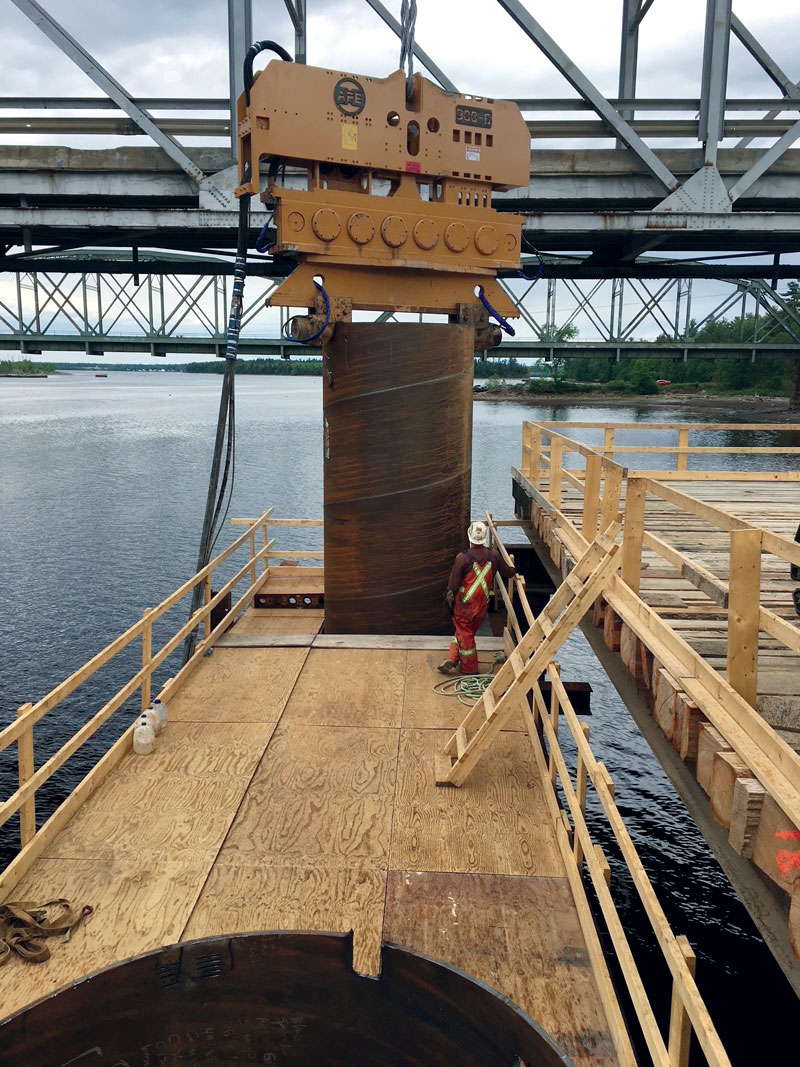
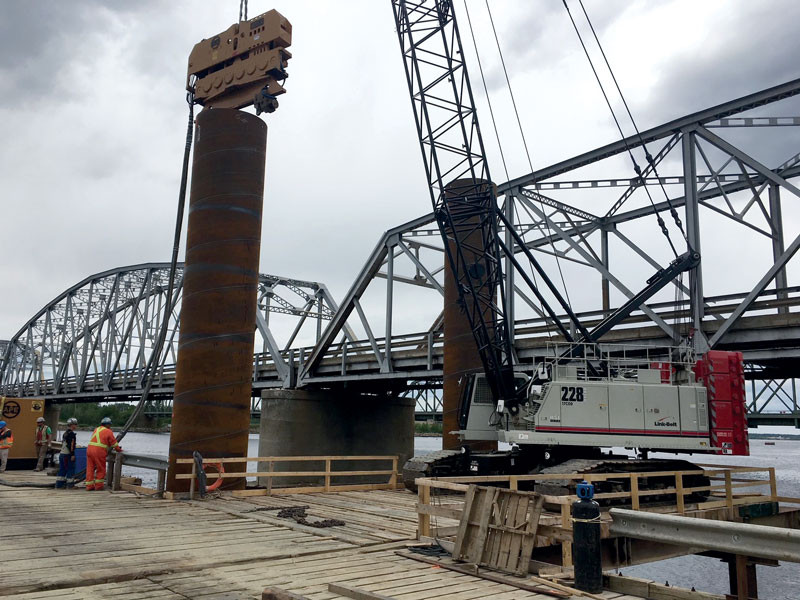
The caisson installations at Piers 2 and 3 began in late June 2021, and crews encountered several issues and challenges. Changes in the rock quality slowed the drill’s progress from five to 10 metres per day through the till layer, to advancing less than one metre per day through the lower portion of the rock sockets. CBF acquired a new specialty hard rock bucket which increased the drilling efficiency in the socket to nearly three metres per day. The drill was also shut down for several days for maintenance and repair. The specialty Kelly bar also had to be reinforced by adding stiffeners.
CBF completed drilling caissons for Piers 2 and 3 in early October 2021. C&R and CBF are proud of the work they have completed on this project to-date and for having been successful in completing some of the deepest caissons in North America last year. C&R completed the substructure work and steel girder erection from the south abutment to Pier 3 in January 2022. C&R spent the remainder of winter 2022 removing and reinstalling the trestle to access Piers 4 and 5. CBF is scheduled to return to site this month to complete the caisson drilling at Piers 4 and 5.